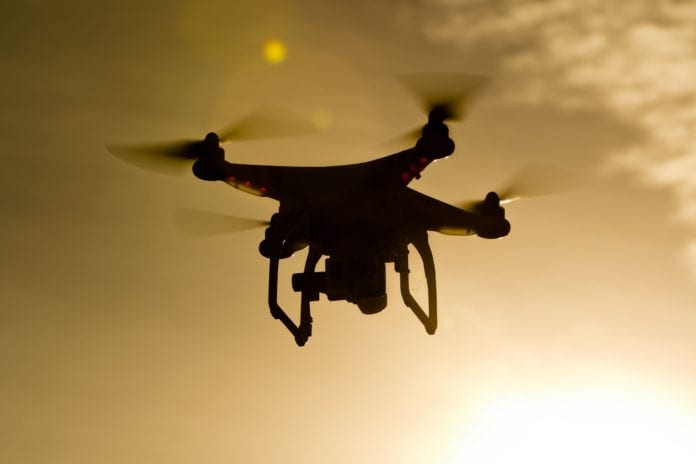According to Unmanned Systems Technology, 5G will enable three prominent drone technologies
It has been shown that flying drones on cellular networks, particularly 5G networks, is a viable option for delivering low-latency and high-performing drone applications such as emergency supply delivery, search and rescue missions and equipment and infrastructure inspection.
According to Unmanned Systems Technology, 5G cellular data will enable three prominent drone technologies: Unmanned Aircraft Systems Traffic Management (UTM), Beyond Visual Line of Sight (BVLOS) flights and Sensor Data Transmission (SDTX).
UTM will deliver a globally standardized technology, allowing 5G networks to be integrated with these traffic management systems to enhance the safety and security of commercial drone operations. BVLOS will open up applications for UAVs that are currently restricted in most jurisdictions around the world to low-altitude operations (below 120 m or 400 ft) within the visual line of sight of a human pilot. Finally, SDTX is used when data is transmitted to ground stations beyond the remote-control station of the pilot. This allows for live broadcasting of the drone’s sensor payload data and it saves data processing time.
Below is a roundup of some of the more prominent 5G drone trials and demonstrations conducted over the past few years.
Percepto & SK Telecom
In May of last year, SK Telecom’s 5G trial network was used by drone manufacturer Percepto to demonstrate its autonomous drones using SK Telecom’s 5G trial network. The company has been working with SK Telecom, Korea’s largest mobile operator, to explore the potential of both 5G and autonomous drones.
Percepto’s drone systems are designed for industrial and enterprise applications and provide aerial visual insights to improve security and business operations. They are powered by computer vision and artificial intelligence and have ultra-high-definition RGB and thermal cameras, as well as a base station that recharges and shelters the drone when it’s not flying.
At the time, Percepto claimed to be the only Drone-In-a-Box (DIB) solution, as well as the only DIB provider offering autonomous flights over cellular networks.
With 5G support, Percepto expects the aerial data drones to be faster and more accurate.
BT, Verizon & Ericsson
In 2018, BT and Verizon worked with a number of partners including King’s, Ericsson and Unmanned Life to demonstrate autonomous control and management of a fleet of drones in central London using network slicing. The group worked together to build a 5G core and create two network slices with similar characteristics: one, a low-latency breakout for a BT end user; the other, a Verizon low-latency breakout.
The demonstration was performed on a dedicated 5G network slice within BT’s network using a 5G radio that, at the time, was new and in its pre-commercial form. 5G allowed for ultra-low latency and high availability to achieve real-time feedback loops, potentially enabling mission critical applications like the delivery of emergency kits, rescue equipment or supplies, search missions in disaster recovery zones and the rapid deployment of a temporary cellular network.
Unmanned Life provided an AI-driven autonomous platform for the demonstration.
Ericsson & China Mobile
Before working with BT and Verizon two years ago, Ericsson collaborated with China Mobile in 2016 to conduct what the pair claimed to be the world’s first 5G-enabled drone prototype field trial on an operator’s network.
In the trial, which took place in Wuxi in China’s Jiangsu province, a drone was flown using China Mobile’s network with 5G-enabled technologies and with handovers across multiple sites.
These handovers were done between sites that were in use by commercial mobile phone users to demonstrate the validity of mobile users sharing a cellular network with drones.
Huang Yuhong, deputy head, China Mobile Research Institute (CMRI), said at the time, “Both companies target to explore the 5G possibilities in vertical industries and new use case scenarios, and together drive towards 5G commercial capability in 2020.”
Ericsson and China Mobile went on to showcase the demo at MWC Shanghai in June 2016.
Coretronic Intelligent Robotics Corp. & Chunghwa Telecom (CHT)
This past July, Coretronic Intelligent Robotics Corp. (CIRC), a Taiwan-based drone company teamed up with Chunghwa Telecom (CHT) to demonstrate the benefits of using autonomous drones on a 5G network. Taiwan’s president Tsai Ing-wen was the main audience for the demonstration, which focused on showcasing a remote drone inspection and real-time transmission of 4K video.
CIRC has formed cooperative agreements with Japanese and Korean telecom firms in April this year to ensure that its industrial drone solutions are prepared to take advantage of and support 5G networks.
“This milestone prepares CIRC to provide its customers with significant operational advantages, including better real-time video stream quality; reduced battery consumption, which means longer mission times and greater distances; and greater data processing in real-time,” CIRC said in a statement announcing the demonstration. “These new capabilities improve operational efficiency and service quality for enterprise applications like security surveillance, infrastructure inspection, disaster prevention environmental change monitoring and delivery logistics.”

